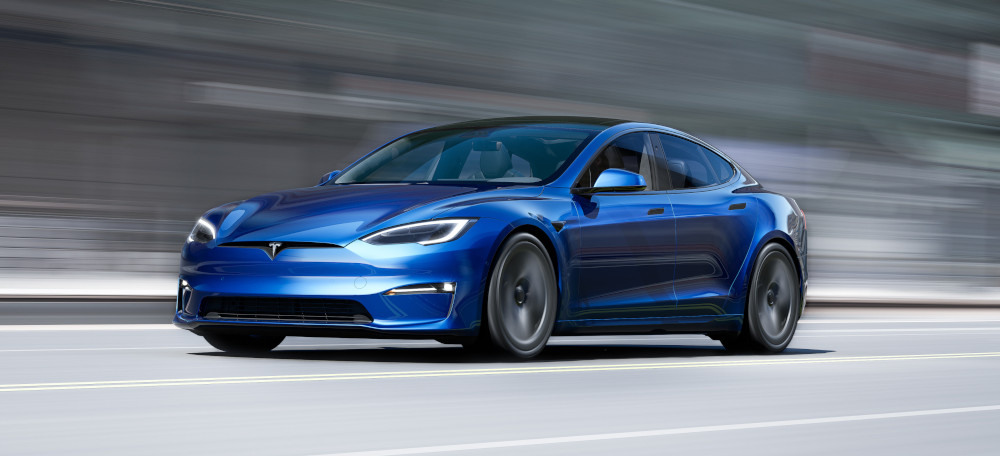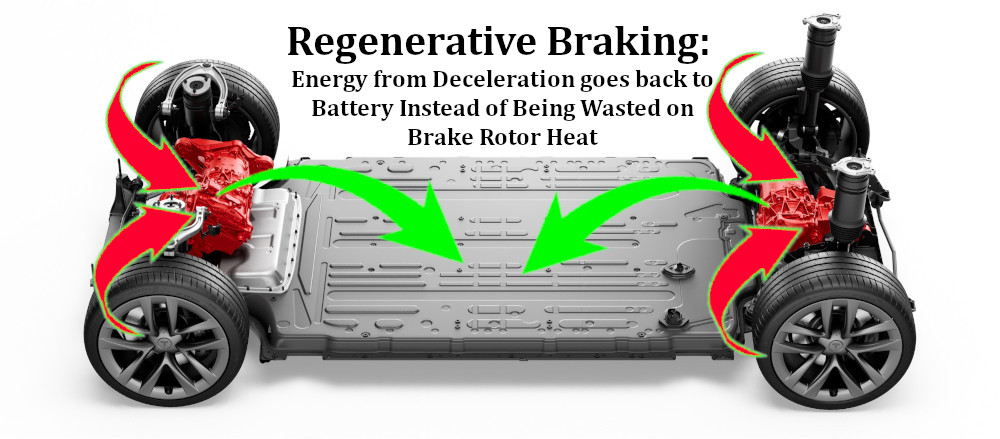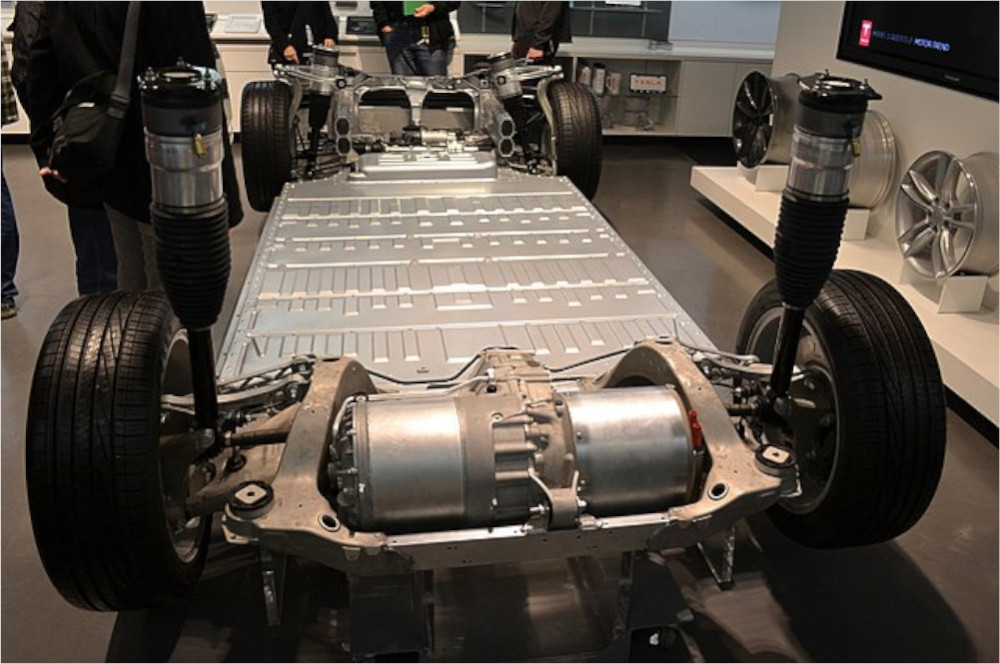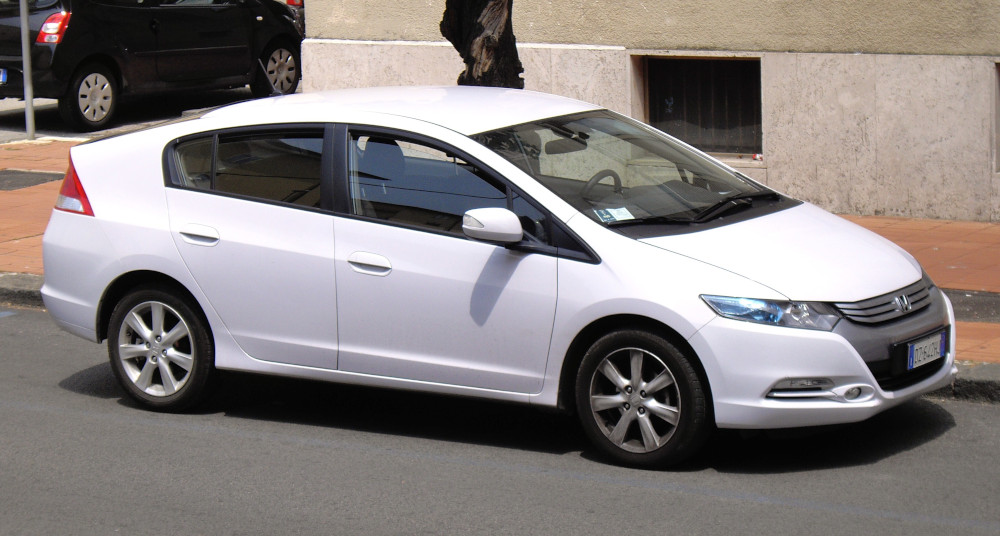Regenerative Braking: Everything You Need to Know (and How it Saves You Cash Money)!
Regenerative Braking (aka regen) systems on EVs and Hybrids reduce maintenance costs while boosting efficiency. Here’s how it all works!
Brakes. The most important vehicle safety feature this side of tires. And also a wearable item not covered under warranty. So most folks tend to ignore braking systems until they hear bad noises or see a light on the dash. Which translates to, depending on make and model, maintenance costs of a few hundred to a few thousand dollars. Electric vehicles and their hybrid cousins are different. They have dual braking systems. Standard brakes like ICE vehicles. And regenerative braking, which is often referred to as regen.
And regen, my friends, is why maintaining an EV or hybrids brakes costs less over the lifetime of the vehicle.
What is regenerative braking? How does it work? Why does it save you money? Read on to get a basic understanding of how regen cuts brake maintenance and boosts efficiency. I promise to explain without all sorts of crazy math!!!
Wasting Kinetic Energy
Vehicles move by converting stored energy, from batteries or gasoline, into kinetic energy. (I promised no math, but the equation is mass x velocity squared if you’re interested.) The amount of energy used largely depends on how firmly and frequently one presses the go-fast pedal. At a constant speed, it takes a lot less energy to keep moving. Which is why vehicles tend to be more efficient during highway driving.
The math works in reverse as well. Pressing the brakes slows vehicles down, which means the vehicle’s kinetic energy has to go someplace… aka be converted into something. With conventional braking systems, that conversion creates HEAT. That is why brakes can get so hot when slowing a car or truck from speed. But there’s a catch. This heat doesn’t do anything for the vehicle.
It’s wasted energy.
But wouldn’t it be great if there were a way to recycle that energy back into a useful form? Surprise, there is and it’s called — you guessed it — regenerative braking.
How Regenerative Braking Works (Goodbye, Motors; Hello, Generators)
In vehicles with electric motors — be they fully electric or hybrids — those motors primarily turn stored battery energy into moving wheels. But in certain modes — most often called one-pedal driving — if you take your foot off the accelerator pedal, the electric motors begin acting electric GENERATORS. Like a little power plant, they recycle kinetic energy back into stored energy for later use. All while slowing the car. Without using the conventional brakes.
Regen braking systems aren’t perfect, of course. They incur some energy losses with Tesla itself estimating efficiency at 64%. And they won’t stop a vehicle during emergency stops or during activities like performance driving. That’s why EVs and hybrids also feature conventional braking systems just like ice-powered vehicles.
It’s the best of both worlds. Recycle energy when you can. Stop quick when you need.
Full-Battery Regen Woes
It’s worth noting that, when driving on a full, or mostly full, charge, EVs don’t engage regen as forcefully. This can create a scenario where a driver experiences inconsistent deceleration during one-pedal drive. Thankfully, Tesla recently released an over-the-air (OTA) update that utilizes the conventional brakes to compensate when regen is not active. Basically, the update makes Tesla one-pedal deceleration feel more consistent regardless of the battery’s state of charge.
My Regen Experience (Tesla Model 3)
How does this sorcery work, from the driver’s point of view? I recently rented a 2019 Tesla Model 3 from a local owner in Jupiter Florida (Hi Andy!), through Turo. I quickly found that I could drive with just one pedal, never needing to use the brakes even in busy southeast Florida traffic. Most fascinating was watching the Tesla’s range actually INCREASE during regen braking, displaying the energy efficiency in real-time.
Tesla has designed their cars so that the regenerative braking is “aggressive” enough that with practice, many drivers find they simply don’t need the brakes except for the occasional panic stop. Of course, this can significantly extend the range of the car as well, since the battery is only lending out charge and gets some of it back during this process.
For context, at no point will a gasoline-powered vehicle see its fuel gauge reverse without visiting a gas station.
Regen in Hybrid Cars
I first experienced regenerative braking when we owned a Honda Insight, which is a hybrid and not a true BEV. A small regenerative braking effect was available in the Insight, though it only happened when lightly using the brake pedal. The effect was still significant, though it took more practice than one-pedal driving in a Tesla or Mustang Mach-E. With mild hyper-mile driving techniques and regen, I netted a 50mpg average. Not bad, given the 44mpg EPA rating!
Regenerative Braking Reduces Maintenance
Okay, so EVs and hybrids are rolling around using electric motors to slow and stop. And guess what that means, kids? Yup, less wear and tear on the conventional brakes. And extended maintenance intervals translate into fewer trips to a mechanic or dealership over the lifetime of a vehicle, and therefore a lower cost of ownership.
Exact costs and savings will vary, of course, based on driving conditions. But one Tesla owner claimed to have driven over 250,000 miles on original brake rotors and pads.
There’s also an environmental benefit to consider. Everyone knows EVs don’t have tailpipe emissions. But brake dust created during conventional braking is a harmful particulate matter that’s toxic to humans and makes up a surprisingly large portion of roadside traffic pollution. So imagine how much the air quality would improve around cities and busy highways if more vehicles weren’t using brakes to decelerate.
Photos: Tesla, Creative Commons, Richard Matthews







